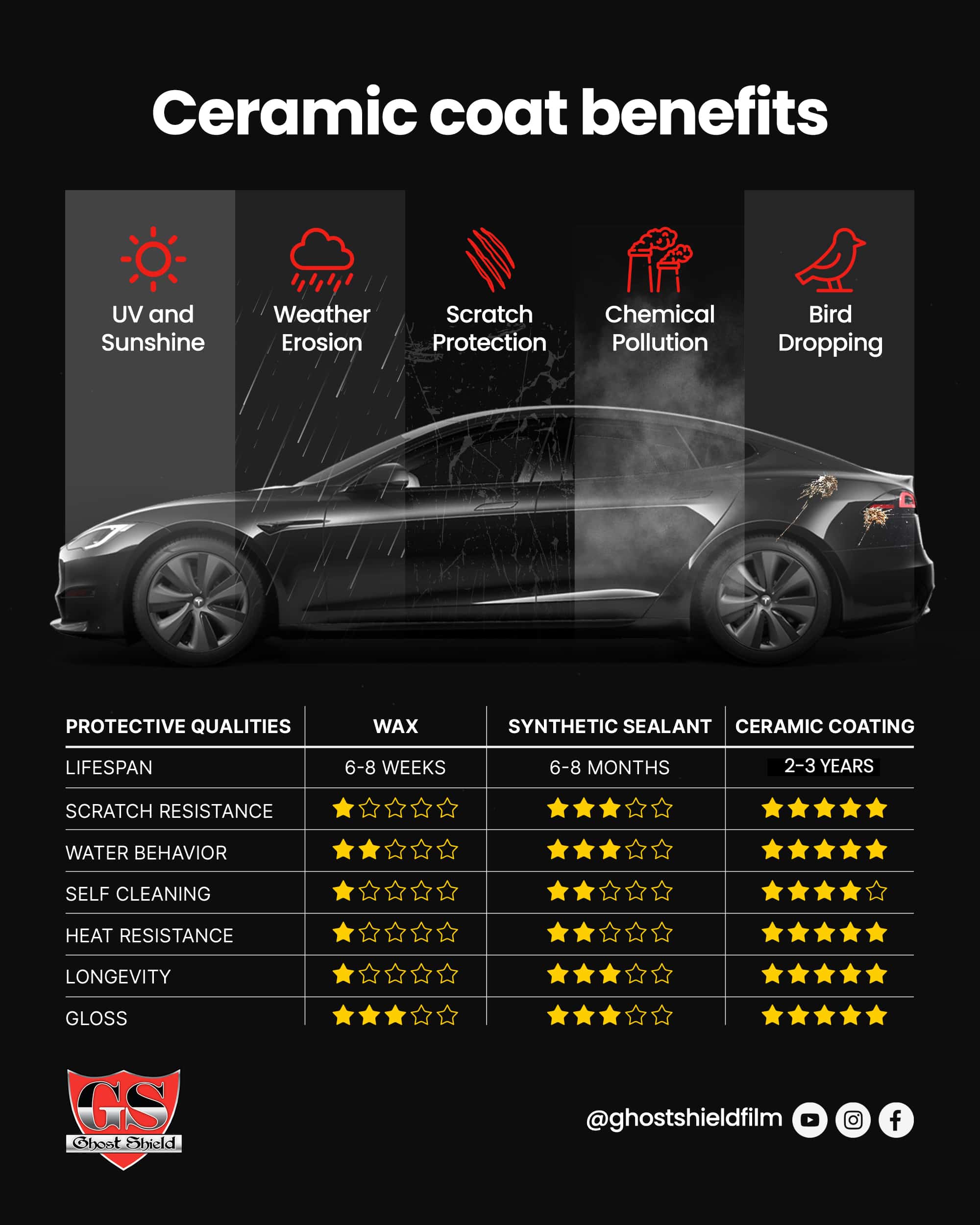The Scientific research Behind the Longevity of Ceramic Coating Philadelphia Applications
The Scientific research Behind the Longevity of Ceramic Coating Philadelphia Applications
Blog Article
Why Ceramic Finishing Is the Ultimate Solution for a Flawless Complete
Ceramic layer has actually arised as a leading service for those looking for a flawless coating for their vehicles, many thanks to its exceptional toughness and safety features. This advanced liquid polymer not only bonds perfectly with manufacturing facility paint but additionally provides a powerful obstacle versus usual hazards such as scrapes, UV rays, and toxic wastes. Additionally, its hydrophobic homes streamline maintenance while enhancing aesthetic allure. However, understanding how this innovation compares to traditional approaches and exploring its application nuances can expose a lot more regarding its value. What variables absolutely established ceramic covering apart?
What Is Ceramic Finish?

When used correctly, ceramic coating creates a hydrophobic surface that fends off water and dust, making it simpler to preserve and clean up. Unlike traditional waxes or sealers, which normally offer short-term security, ceramic finishings can last for a number of years, relying on the product top quality and application method. The process of applying ceramic finish calls for careful preparation, including detailed cleansing and in some cases repaint correction, to make certain ideal bonding and effectiveness.
Ceramic finishings are not restricted to vehicle surfaces; they can additionally be made use of on numerous materials, including glass, steel, and plastics, giving a flexible option for enhancing defense. Overall, ceramic finishing stands for a significant innovation in surface security modern technology, integrating both functional and visual advantages for a large range of applications.
Benefits of Ceramic Finishing
While lots of surface area security options exist, the advantages of ceramic covering attract attention because of its special residential properties and long-lasting efficiency. One of the main benefits is its remarkable longevity. Ceramic Coating Philadelphia. Unlike conventional wax or sealants that call for frequent reapplication, ceramic coverings give a resilient layer that can last for numerous years, dramatically lowering maintenance efforts
An additional notable advantage is improved security against environmental impurities. Ceramic layers create a hydrophobic surface area that wards off water, dust, and different contaminants, making it less complicated to clean up. This attribute not just preserves the car's look yet also decreases the threat of corrosion and oxidation, especially in rough climate conditions.
Moreover, ceramic finishes offer exceptional resistance to UV rays, preventing fading and deterioration of paint over time. This UV security is critical for keeping the aesthetic value of automobiles and surface areas revealed to direct sunshine.
Furthermore, the shiny coating attained with ceramic covering enhances the total visual allure, offering surface areas a showroom-quality sparkle. On the whole, ceramic finishes represent a considerable improvement in surface defense technology, offering long-lasting benefits that deal with both visual and functional needs.
How It Works
Recognizing the science behind ceramic layers reveals how they provide such amazing security and long life. At its core, a here are the findings ceramic finish is a fluid polymer that chemically bonds with the automobile's factory paint. This bonding creates a safety layer that is both oleophobic and hydrophobic, repelling water, dust, and oil. The key component of a lot of ceramic finishes is silicon dioxide (SiO2), which is stemmed from quartz. This substance contributes to the covering's firmness and resistance to scratches, UV rays, and ecological contaminants.
The application procedure involves multiple actions, consisting of surface preparation, which is vital to achieving ideal attachment. As soon as used, the coating undergoes a treating procedure, throughout which it hardens and forms a semi-permanent bond with the paint surface. This bond is what identifies ceramic finishings from typical waxes and sealers, providing a longer-lasting safety barrier that can withstand for many years.
Furthermore, the density of the layer can improve its safety high qualities, ensuring that it can withstand severe conditions. Eventually, the science of ceramic finishings combines innovative materials with cutting-edge application strategies to provide an exceptional level of protection and aesthetic improvement for vehicles.
Comparison With Standard Methods
When compared to standard paint security techniques such as sealers and waxes,The benefits of ceramic coatings become particularly obvious. While waxes supply a momentary luster, typically lasting a few weeks to a number of months, ceramic finishes give a resilient protective layer that can endure for several years. This durability dramatically decreases the regularity of reapplication, making ceramic layers an extra economical remedy over time.
Furthermore, standard methods usually need comprehensive preparation and multiple applications to attain an acceptable level of protection. In comparison, ceramic coverings bond at a molecular degree with the automobile's surface, creating a durable guard versus ecological contaminants like UV rays, acid rainfall, and road salts. This bond improves the lorry's resistance to scratches and swirl marks, which are widespread with traditional waxes and sealers.
Additionally, the hydrophobic residential or commercial properties of ceramic coatings repel water and dirt, resulting in simpler cleansing and maintenance. In comparison, wax and sealant-treated surface areas can draw in gunk, necessitating more frequent cleaning - Ceramic Coating Philadelphia. Overall, ceramic finishings not only offer exceptional protection but likewise deliver an extra visually enticing and enduring coating, developing them as the preferred choice for critical vehicle owners
Application and Upkeep Tips

Using a foam applicator, use the finish in small sections, adhering to the manufacturer's guidelines concerning density and overlap. Allow enough treating time in between layers, generally 1 day, to ensure proper bonding. After application, it is essential to avoid direct exposure to water or severe aspects for at least a week to allow the layer to fully heal.
Additionally, using a ceramic maintenance spray can improve the finishing's hydrophobic homes and longevity. Routine assessments for any kind of indications of wear will aid preserve the layer's integrity and preserve that beautiful surface.
Verdict
In conclusion, ceramic covering emerges as an exceptional option for accomplishing a flawless vehicle finish. By creating a durable bond with factory paint, ceramic covering effectively shields against scrapes, UV rays, and environmental impurities.

Report this page